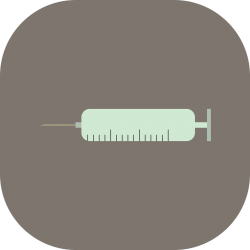Rather than working to help addicts quit using drugs entirely, harm reduction programs work to help people reduce their drug use, and reduce the harm it causes for them and others around them.
The Logic Behind Harm Reduction
Even though drugs are illegal and harmful, people continue to use them. According to the Centers for Disease Control drug abuse is reaching epidemic proportions particularly when it comes to overdose. Most of the illegal drugs that people use are addictive and some are very dangerous. Most people are aware that an addict will continue to use drugs no matter what the consequences. These consequences are loss of employment, loss of housing, loss of family. Some people will also do things that they would never do ordinarily, things like prostitution, theft, and worse. It is not surprising that there are programs whose intention is not to stop drug abuse but to make it less dangerous. One of these programs is Harm Reduction.
For help finding treatment for addiction call 800-934-1582(Sponsored) toll free anytime.
What is Harm Reduction?
Harm Reduction is a community based program that focuses on making drug use less dangerous rather than extinguishing it permanently. Its creators recognize that because of its nature, drug use is not going to go away, so instead the work on making sure less people die from its consequences. According to the National Institute on Drug Abuse, most drugs not only damage a person’s life it can affect their health. Drug abuse leads to high risk behavior such as unsafe sex, sharing needles, driving recklessly, and overdose. Harm Reduction involves reducing this risk while recognizing an individual’s right to use drugs.
Harm Reduction reduces risk by introducing programs like:
- Needle and syringe exchanges – this program is aimed at IV drug users. They can take their used needles and syringes and turn them in for new ones, no questions asked. It keeps addicts from using dirty needles which reduces the risk of spreading or contracting blood borne illnesses like HIV and Hepatitis.
- Opioid Substitution Therapy – opioid substitution therapy allows addicts to go to a qualified doctor. Once there they are evaluated for level addiction and placed on a drug that replaces the opioid drug. This stops withdrawal and prevents overdose at times.
- Safe Injection Sites – Safe Injection sites are places where people can legally use drugs in a safe, sanitary environment. While under the doctor’s care, they are not judged for their drug use and can engage in using whenever they need to. They can also find information about drug therapy and counseling if they would like. These sites provide both a safe place and a place to go when the user is considering rehab or therapy.
- They provide safe sex education, designated drivers and transpiration, reducing the legal impact of drug use, information about options, and condoms as well as dental dams.
Harm Reduction covers more programs than are listed, these are just the most common.
We can help you find treatment for addiction. Call 800-934-1582(Sponsored) toll free anytime.
Basic Principles of Harm Reduction
Harm Reduction is founded off several basic principles. Each of these principles contains an idea that guides those involved in the Harm Reduction cause. The principles are:
- Addiction is a public health issue and not a legal or moral one. Law enforcement should not punish drug users for their addiction. It falls on the public health sector to help addicts make the right choices and recover from their addiction rather than suffer legal consequences.
- When creating policies they should improve the life of the individual, community, and society in general. Since addiction is a public health problem, helping them helps the community and society. They need help and the policies should reflect that.
- There is a lot of harm that can come from drug use and it is the community’s responsibility to help rather than cause more harm. Some current policies set the addict up for failure instead of helping them make the correct choices.
- The ability to choose is essential for every individual. By leaving the ability to choose up to the individual, you ultimately help the individual.
- Economic, social, and environmental factors all influence a person’s drug use. Some use because their parents did and they grew up with the drug use in their home.
- Treat the addict with dignity. Each person has dignity even those who are addicted to drugs. Every individual has the right to have their dignity preserved despite their choices.
- Addicts should be responsible for their own behavior. Being responsible for their behavior does not mean punish the addict but help them to realize that there are other options and choices they can make.
- Accept the individual’s right to use the drug. Even if you think it is wrong, each individual has the right to make the decision to use or not.
- You cannot ignore an individual just because they are a drug user. They can speak, they have opinions just like everyone else does. Just because they use drugs does not mean that their voice should be silenced.
These are the principles that Harm Reduction was founded on. Although they do not condone drug use they believe the individuals have the right to choose. Sometimes that choice involves rehab and other times it involves continued drug use. There is no judgment or condemnation in Harm Reduction.
The logic behind harm reduction is to understand that people are going to continue to use drugs and to make that practice as safe as it can be. Essentially, it uses the theory that people are going to do it anyway, why not make sure they are safe. This includes things like overdose prevention, new needles, and education.
the Take-Away

